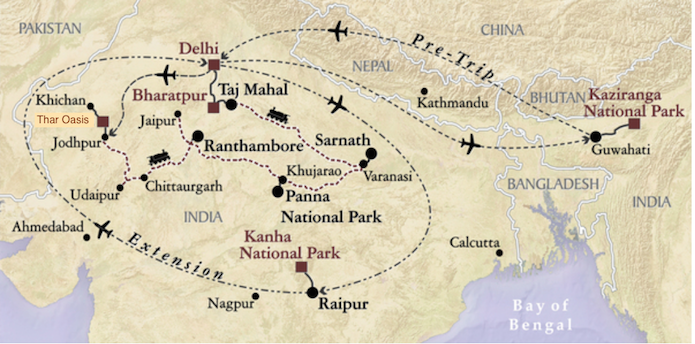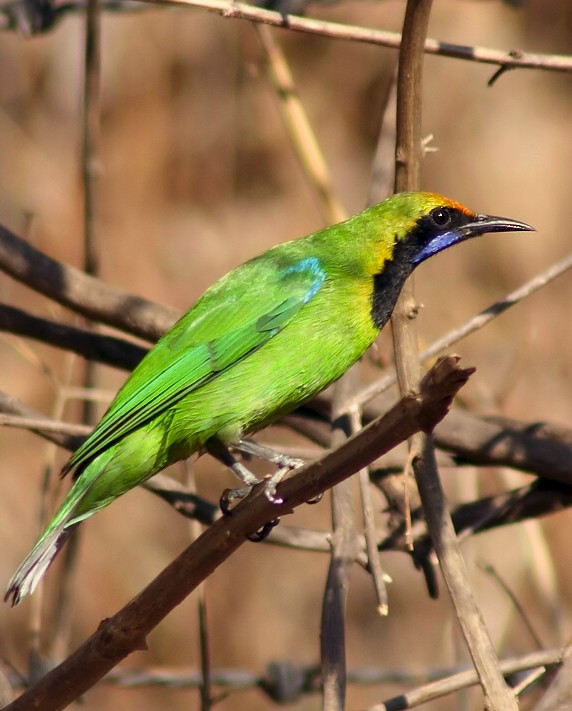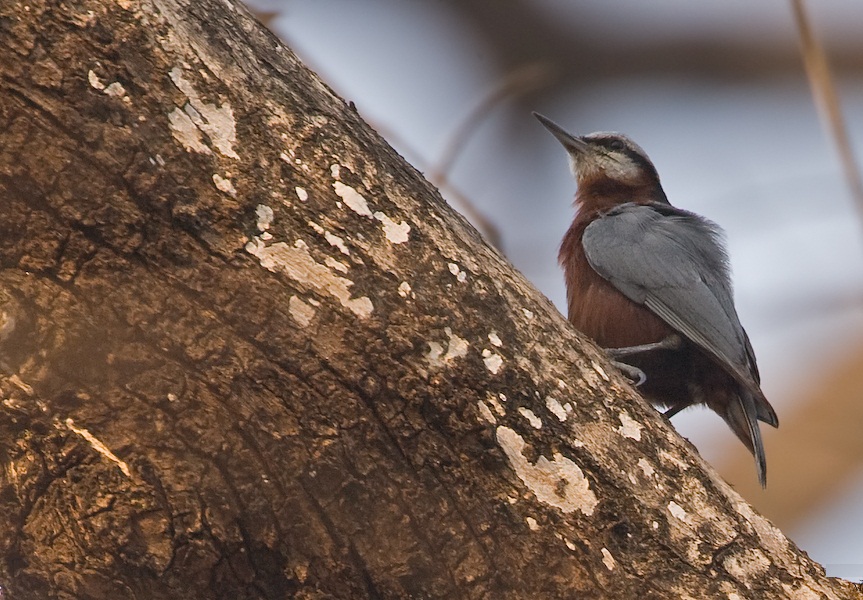
Today we explored the area near Kanha National Park
(Image courtesy of VENT)
(Click on images to enlarge)

 Flowers of the Palash (Image courtesy of Wikimedia Commons) |
Because of the holiday, we couldn’t visit the national park, so we had a
quieter day, which was quite welcome. We met the others at 7 to bird the
hotel’s extensive grounds. It was like Christmas. Standing on the
verandah outside the hotel restaurant, we looked up into a Palash tree (also
known as Flame of the Forest and traditionally used to make colors for Holi).
It was full of bright red blossoms and being visited by swarms of nectar
eaters, such as the beautiful Golden-fronted Leafbirds, which were among the
several lifers we got just standing there. (The Leafbirds are also a new family
for us.)
For a birder, it was a treat comparable to sitting on the verandah at the Asa Wright Nature Centre in Trinidad. One had the same frustration of not being able to look at enough of the gorgeous birds at the same time.
 Golden-fronted Leafbird (Image courtesy of Wikimedia Commons) |
 Male and female Plum-headed Parakeets (Image courtesy of Wikimedia Commons) |
 Indian (Chestnut-bellied) Nuthatch (Image courtesy of Wikimedia Commons) |
| The hotel’s entrance is a traditional farmhouse, quite handsome, but it has been painted white, unlike the houses all around, which are very bright colors. We enjoyed having a chance to study its construction: |
|
Entrance to the Baagh Resort |
Traditional construction at the Baagh |
| We didn’t get back to the hotel until shortly after sunset, by which time we had added several new birds to our list. |
|
| My birds for the day: |
| Little Egret | Eastern Cattle Egret | Indian Pond Heron | Shikra | Rock Pigeon |
| Oriental Turtle Dove | Spotted Dove | Yellow-footed Green Pigeon | Greater Coucal | Jungle Owlet |
| Green Bee-eater | Indian Roller | Coppersmith Barbet | Brown-capped Pygmy Woodpecker | White-naped Woodpecker |
| Alexandrine Parakeet | Rose-ringed Parakeet | Plum-headed Parakeet | Large Cuckooshrike | Indian Golden Oriole |
| Black-hooded Oriole | Black Drongo | White-bellied Drongo | Rufous Treepie | Indian Jungle Crow |
| Rufous-tailed Lark | Red-rumped Swallow | Indian Nuthatch | Red-vented Bulbul | Siberian Chiffchaff |
| Tickell’s Leaf Warbler | Hume’s Leaf Warbler | Greenish Warbler | Blyth’s Reed Warbler | Oriental White-eye |
| Oriental Magpie-Robin | Verditer Flycatcher | Red-breasted Flycatcher | Black Redstart | Common Myna |
| Chestnut-tailed Starling | Golden-fronted Leafbird | Thick-billed Flowerpecker | Purple Sunbird | Grey Wagtail |
| Tawny Pipit | Chestnut-shouldered Petronia | Common Rosefinch |

